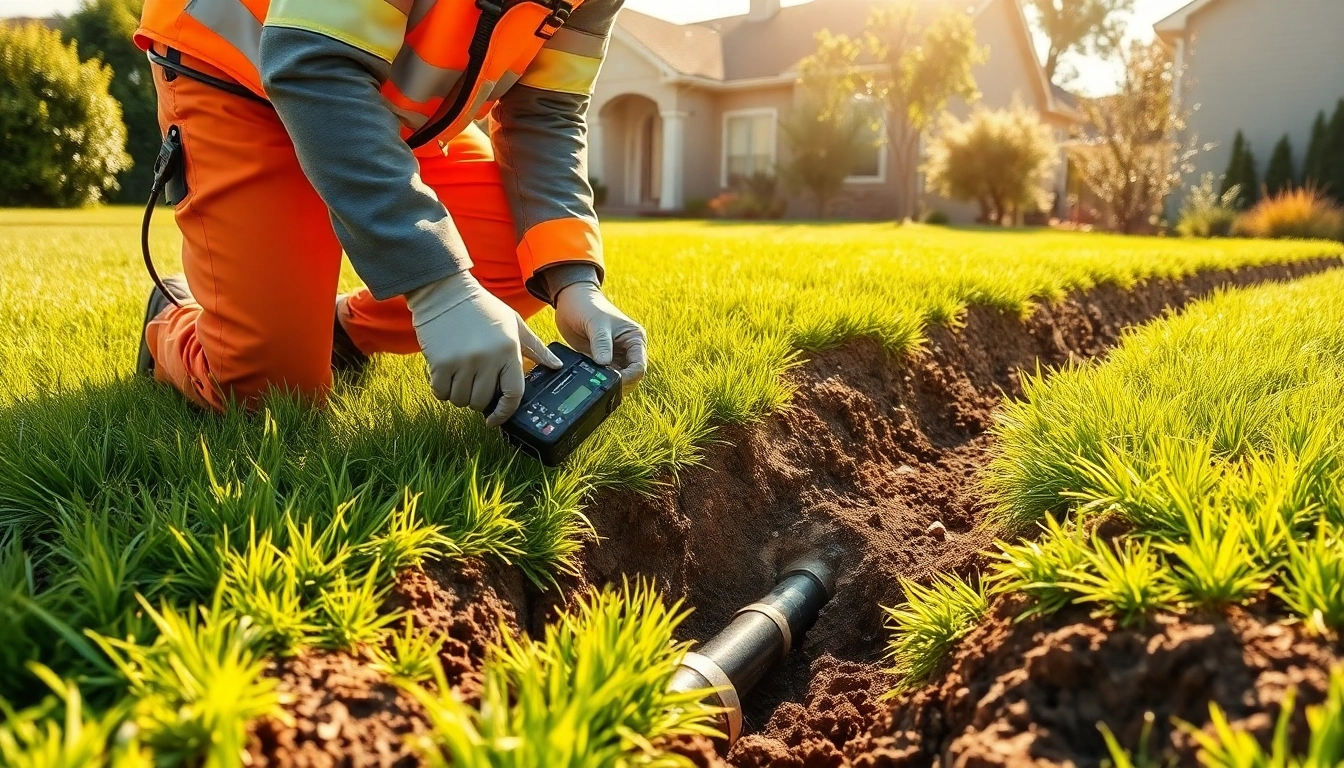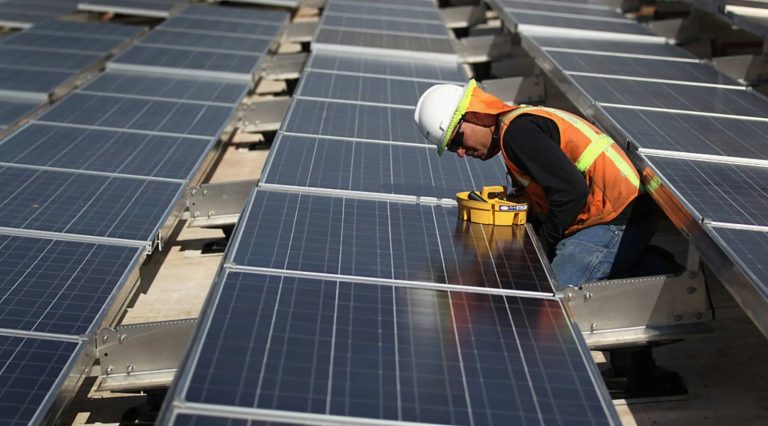Understanding Underground Leak Detection
What is Underground Leak Detection?
Underground leak detection refers to the methods and technologies employed to locate leaks in water pipes and other underground infrastructure. These leaks can lead to significant water loss, property damage, and increased utility bills if not addressed promptly. Utilizing specialized equipment and methodologies, professionals can determine the precise location of leaks, enabling targeted repairs and minimizing disruption in the surrounding area.
The Importance of Early Detection
Discovering and addressing leaks early in their development is crucial for several reasons. First, even small leaks can waste substantial amounts of water over time. According to estimates, a leaking pipe can waste hundreds of gallons per day, contributing to water scarcity issues and higher costs for homeowners and businesses alike. Moreover, undetected leaks can weaken the structural integrity of buildings, lead to mold growth, and create hazardous conditions.
Early detection not only saves water but also reduces repair costs and prevents further damage to surrounding environments. Engaging professional services for Underground Leak Detection plays an essential role in ensuring water systems maintain their integrity and functionality.
Common Signs of Underground Leaks
Recognizing the signs of underground leaks can help in initiating prompt investigations. Some common indicators include:
- Unexplained water pooling in yards or basements.
- Shifts in soil or cracks in pavements and foundations.
- A sudden increase in water bills without a corresponding increase in usage.
- Changes in water pressure, often manifesting as low water flow.
- Presence of mold or mildew in areas adjacent to water lines.
Methods and Technologies in Underground Leak Detection
Traditional Techniques for Underground Leak Detection
Historically, leak detection relied on more rudimentary methods, often involving visual inspections and rudimentary acoustic techniques. Techniques such as:
- Visual Inspection: Trained professionals visually examine the premises for signs of leaks, including water pooling or damp spots.
- Acoustic Detection: This involves using sensitive microphones to listen for the sound of water escaping from pipes.
- Pressure Testing: By monitoring pressure levels in water systems, professionals can determine if there is a significant drop indicating a leak.
While these methods can be effective, they have limitations relating to their sensitivity and accuracy, particularly in densely built urban environments.
Advanced Technologies in Leak Detection
With advancements in technology, modern leak detection services utilize a variety of sophisticated tools that enhance accuracy and efficiency. Key innovations include:
- Ground Penetrating Radar (GPR): GPR uses radar pulses to image the subsurface, allowing for precise location identification of leaks without excavation.
- Thermal Imaging: Using infrared cameras, leaks can be spotted by observing temperature variations created by water escaping from pipes.
- Smart Sensors: These devices can detect changes in moisture levels and pressure, enabling real-time monitoring of underground systems.
- Ultrasonic Technology: This method captures sound frequencies that are inaudible to the human ear, indicating leaks in pipelines.
These advanced technologies significantly reduce investigation time and increase the accuracy of locating leaks, making them indispensable tools for modern leak detection specialists.
Choosing the Right Equipment for Underground Leak Detection
Selecting the appropriate equipment for underground leak detection depends on several factors, including the type of infrastructure, the environment, and the specific needs of the project. Popular equipment options include:
- Acoustic Sensors: Used for their efficiency in identifying sound generated by leaks.
- GPR Equipment: Ideal for investigating larger areas without damaging the surface.
- Thermal Cameras: Effective in identifying temperature disparities caused by escaping water.
Professionals must assess their specific needs and choose equipment that maximizes efficiency and accuracy while minimizing costs.
Steps for Effective Underground Leak Detection
Assessment and Preparation
Before initiating the detection process, a thorough assessment of the site is essential. This includes understanding the layout of underground systems, historical maintenance records, and any known leak occurrences in the area. Preparation steps may involve:
- Gathering all relevant documentation associated with the facility’s plumbing layouts.
- Conducting preliminary visual inspections to identify immediate signs of leaks.
- Coordinating with utility companies to ensure no other subsurface pipes will be affected during investigations.
Executing the Detection Process
Following assessment, professionals can begin the actual detection process. This typically includes:
- Deploying selected technology to begin monitoring areas of concern.
- Conducting systematic tests, including pressure testing and acoustic readings.
- Mapping out the detected anomalies for further analysis.
- Ensuring the safety of personnel and the integrity of infrastructure during the detection process.
Data collected during this phase is critical for understanding the extent and location of leaks.
Analyzing and Interpreting Results
Once data has been collected, the next step involves analyzing findings and interpreting results. This process may include:
- Comparing data against known benchmarks to identify significant discrepancies.
- Employing software tools to create visual representations of detected leaks.
- Calculating potential water loss and associated costs to assist in decision-making.
Accurate interpretation of results allows for informed decisions regarding repair strategies and budgets.
Challenges in Underground Leak Detection and Solutions
Geographical and Environmental Challenges
Geographical factors can complicate leak detection efforts, especially in areas with rocky terrain, deep roots, or established infrastructure. These challenges may necessitate tailored strategies such as:
- Utilizing specialized tools designed for complex environments.
- Conducting pre-investigative studies to evaluate the geology and subsurface compositions.
- Training personnel to adapt techniques based on real-time environmental assessments.
Technological Limitations
While technology has transformed leak detection, it is not without limitations. Challenges such as equipment sensitivity and user expertise can impede success. Solutions include:
- Investing in training for personnel on the latest technologies and methods.
- Regular maintenance and calibration of detection tools to ensure reliability.
- Integrating multiple technologies for a comprehensive approach, compensating for individual tool limitations.
Mitigating Human Errors in Detection
Human error can significantly impact the accuracy of leak detection. Common issues include misinterpretation of data and improper use of equipment. Mitigation strategies include:
- Implementing standardized operating procedures that outline each step of the detection process.
- Encouraging teamwork and peer reviews to promote accuracy in data interpretation.
- Utilizing simulation training programs to enhance skill levels before fieldwork.
Best Practices for Underground Leak Detection
Developing a Leak Management Plan
Establishing a formal leak management plan is critical for effective long-term leak detection and prevention. This should outline protocols for regular inspections, quick response strategies, and annual evaluations of existing infrastructure.
Components of a leak management plan may include:
- Scheduled maintenance and routine assessments of older pipes.
- Clear communication channels for staff to report any signs of leaks promptly.
- Documentation of inspection results for tracking repairs and patterns over time.
Regular Maintenance and Inspections
Proactive maintenance and periodic inspections can prevent extensive leak issues down the line. Establishing a maintenance cycle that includes:
- Regular visual inspections to catch early warning signs.
- Testing and calibrating equipment used for leak detection.
- Offering training sessions to ensure all personnel are up-to-date on the best practices.
Training for Personnel on Underground Leak Detection Techniques
Investing in comprehensive training programs is vital to ensure personnel are equipped to handle modern leak detection technologies and methods effectively. Effective training should cover:
- A breadth of leak detection techniques, from traditional to the latest advancements.
- Best practices for interpreting data and results accurately.
- Safety protocols to ensure personnel operate in a safe manner during inspections and repairs.
Empowered and knowledgeable staff can enhance leak detection efforts, ultimately safeguarding water resources and reducing unnecessary costs. By recognizing the importance of underground leak detection and implementing industry best practices, homes and businesses can achieve water conservation and system integrity.








